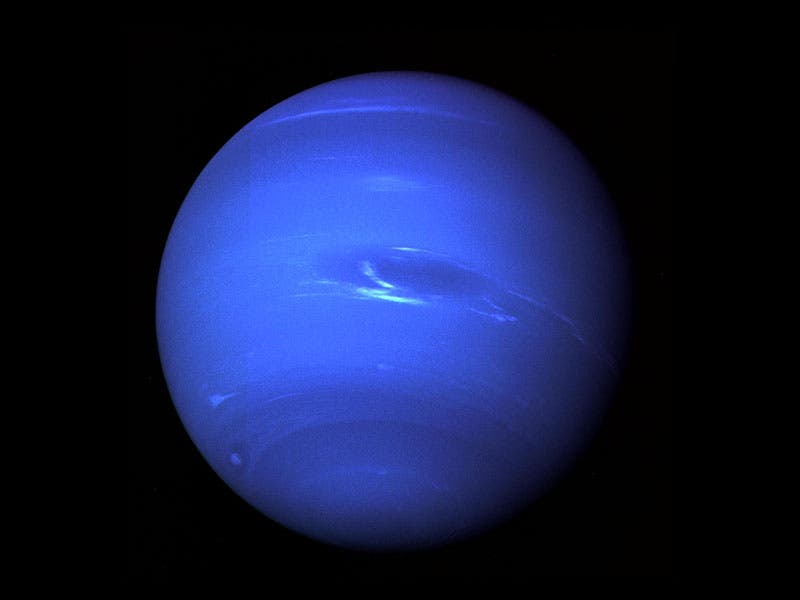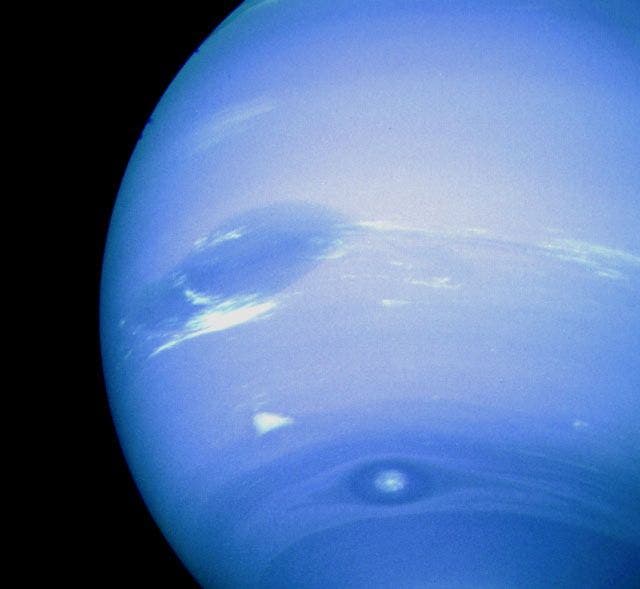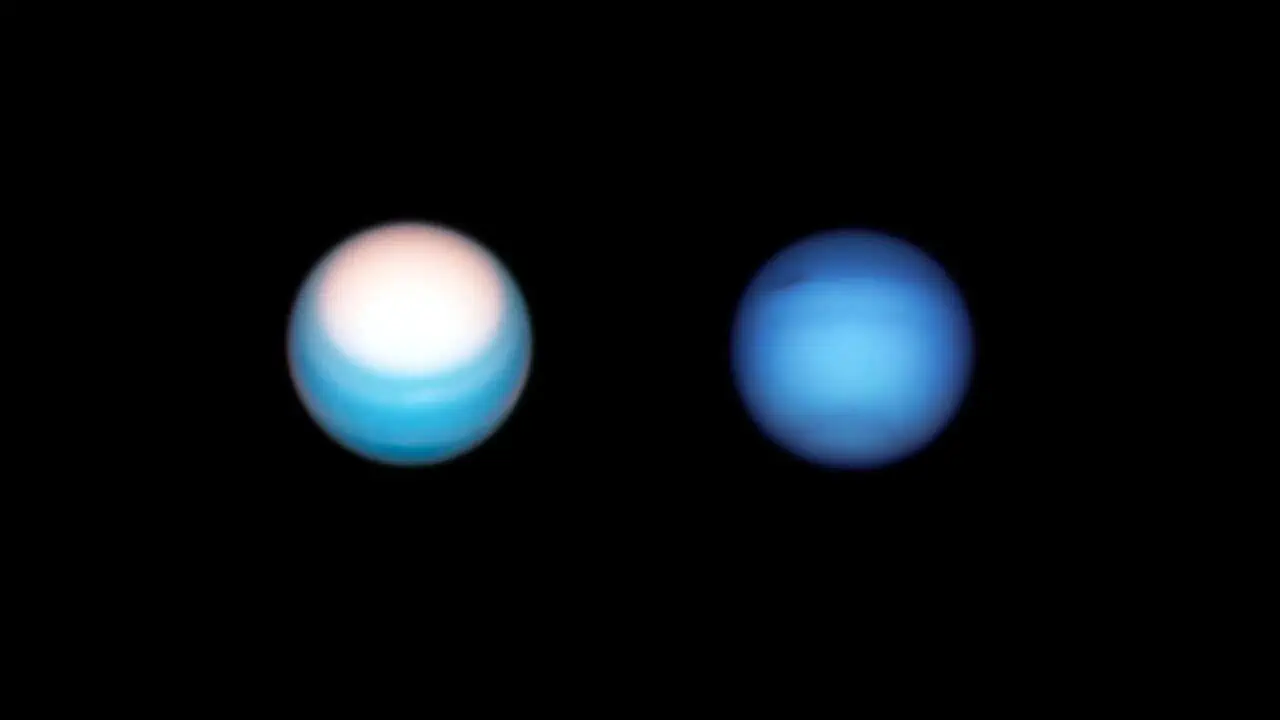
Out of all the planets in the solar system, Neptune is the one that looks most peaceful. When seen through a telescope, the eighth and most distant planet from the sun appears sky-blue or as a uniform ocean world that would have made the Roman god of the sea proud.
In reality, Neptune is anything but peaceful, with large storms stretching across thousands of miles regularly affecting its surface. And although it might look like an ocean world, it’s not water that is responsible for its “blueness”.
What makes Neptune blue?
Neptune’s atmosphere is mainly comprised of three gases: hydrogen (80%), helium (19%), and methane (1%).
It’s these clouds of methane gas that explain Neptune’s blue marble appearance. Despite the fact it makes up a relatively tiny proportion of Neptune’s atmosphere, methane absorbs red wavelengths of light and reflects blue light back into space.
The absorption of red light by methane is known as selective scattering. This phenomenon occurs when certain molecules or particles in an atmosphere selectively absorb specific colors of light while allowing other colors to pass through or scatter. In Neptune’s case, the methane molecules absorb the longer wavelengths of light, predominantly red, while allowing the shorter blue wavelengths to scatter back toward us.
The blue color of Neptune is further enhanced by the presence of small amounts of other atmospheric components, such as hydrocarbons and atmospheric haze. These compounds contribute to the scattering of sunlight, reinforcing the blue hue we observe.
Neptune is the only planet in the solar system that isn’t visible to the naked eye. As such, it was among the last to be discovered in 1846 by Johann Galle, based on mathematical predictions made by Urbain Le Verrier.
But during these initial observations, astronomers had no idea what Neptune looked like. They just knew they found a new planet.
Neptune, which is about four times larger than Earth, was first visited by a spacecraft in 1989 when NASA’s Voyager 2 made a flyby. Voyager beamed back images showing Neptune’s ocean-like hue for the first time. It was really a stroke of luck that Neptune was so aptly named as astronomers could not have known that the planet is ocean blue.

Similarly to Uranus, Neptune is one-fifth hydrogen and helium by mass. The bulk of the planet’s mass, however, is owed to heavier molecules such as ammonia, methane, carbon, oxygen, and water.
Despite their similarities in size and composition, Neptune and Uranus are distinctly colored. This is explained by different chemical components in each of the planet’s upper atmospheres, particularly in the global cloud deck.

Being present in the outermost layer of the atmosphere, the most important compound that influences the color of both planets’ atmospheres is methane. The greenhouse gas absorbs red light at wavelengths of 600 billionths of a meter, reflecting back bluer light. Uranus, however, is more azure, blue-green in appearance due to an additional chromophore that Neptune seems to lack.
Neptune’s wrath
Neptune’s clouds are known to vary with altitude, just like on Earth. Methane clouds condense in the highest layers of the planet’s atmosphere due to frigidly cold temperatures. Further down, there may be clouds of hydrogen sulfide, ammonium sulfide, ammonia, and water. The blue-toned methane isn’t evenly distributed; ten to a hundred times more methane, ethane, and ethyne can be found at Neptune’s equator than at its poles.
But despite its appearance, Neptune’s atmosphere itself is far from serene. It experiences powerful winds, with some reaching speeds of over 1,300 miles per hour (2,100 kilometers per hour). The winds on Neptune are the fastest ever measured in the solar system. These high-speed winds contribute to the formation of storms and dark spots on the planet’s surface.
While these features do not directly influence Neptune’s blue color, they are important characteristics of this distant gas giant.
Studying the color of planets like Neptune not only satisfies our curiosity about the universe but also provides valuable insights into the composition and behavior of atmospheres in other celestial bodies. By examining the light that reaches us from distant planets, astronomers can deduce the presence of specific gases, such as methane, and gain a better understanding of the conditions of these distant worlds.
The combination of methane, selective scattering, and other atmospheric factors all work together to paint Neptune in its magnificent shades of blue. It’s a reminder of the incredible diversity and wonders that await us in our vast and mysterious universe.
Was this helpful?



